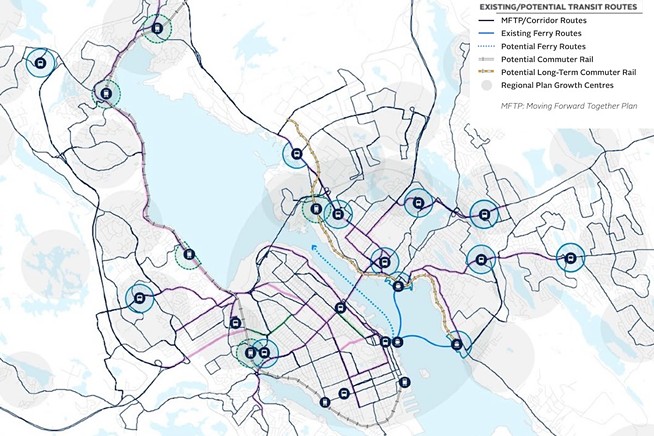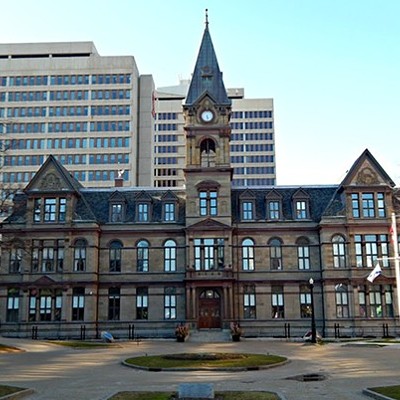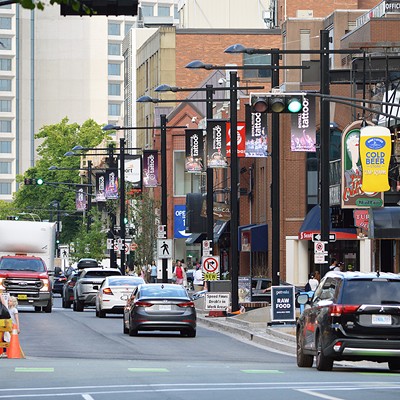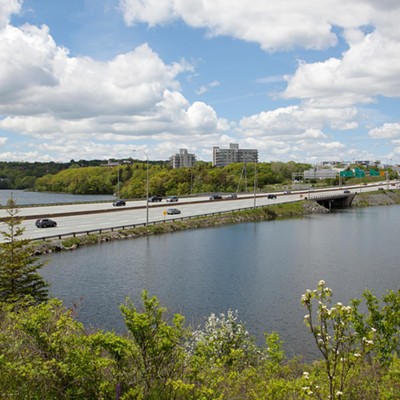The Community Planning and Economic Development Standing Committee met on Thursday, Nov. 16, and the only thing they did of consequence was vote on a motion allowing construction companies to pour concrete an additional hour and a half until 9:30 pm. This will go to council for final approval. Councillor Patty Cuttell also kept her seat as chair of the committee.
Other than that, this meeting was dominated by sustainability. This committee first got a presentation from Peggy Cameron of Friends of the Halifax Common fame. She told the committee that the high-rise buildings going up near where she lives are bad for the planet, in construction costs and then in the pollution generated by the people living there, who all drive. Her presentation relied heavily on a report prepared by Development Options Halifax (where Cameron is listed as the president and a director) with support from Friends of the Common (where she is also a director) and Toronto/Vancouver based Mantle Developments, which is described as a “climate change strategy consultancy.”
The report, unsurprisingly, finds that the four high-rises in the works for the corner of Spring Garden Road and Robie Street—two separate two-tower developments, Promenade Robie South and Spring Garden West, on a big swath of land called the Carlton Street block—are bad for the planet, and should instead be “missing-middle” housing. It’s also worth pointing out that while the sources referenced by Cameron’s report do agree with her assessment of the problem (building development is bad for the planet), these studies also often include alternatives that would make development more sustainable. It is unclear why the Development Options/Friends of the Common report focused on not building high-rises, instead of how to make high-rise building more sustainable.
Councillor Tim Outhit questioned Cameron’s presentation, saying that dense development means that more people can access municipal services, like transit, which would decrease the carbon output of high-rises throughout their life. Cameron said transportation planning for dense populations was not something the city actually did, pointing out the lack of dedicated road space for buses and bikes. She also pointed out that high-rise developments often have underground parking, which increases the cost of development and lowers the overall affordability of the city.
Speaking about underground parking at the Carleton Block, the Promenade, which council has approved, doesn’t conform with the Centre Plan zoning, so required development agreements. Development agreements require traffic impact statements, and the traffic impact statements done for this development concluded that underground parking would be needed. So, even though this development is in a dense part of the city on major transit corridors, at the heart of Halifax’s protected bike infrastructure, and in an area of the city that has no parking minimums, Halifax’s planning processes encouraged the development of 511 underground parking spots with the requirement to create a traffic impact statement. Even though traffic impact statements are make-work projects for traffic engineers that then force those traffic engineers to estimate car trips from absolute garbage data sets to justify adding parking spots. It is unclear why the city persists in this practice in places with no parking minimums. (As for parking at the development adjacent to the Promenade, Spring Garden West’s promotional website says it will have “over 300 public parking spaces sheltered below” street level.)
At the end of Cameron’s presentation, after questions of clarification, chair Cuttell allowed an out-of-order outburst from Cameron, who said that in the future we will start calling high-rise development a “climate crime.”
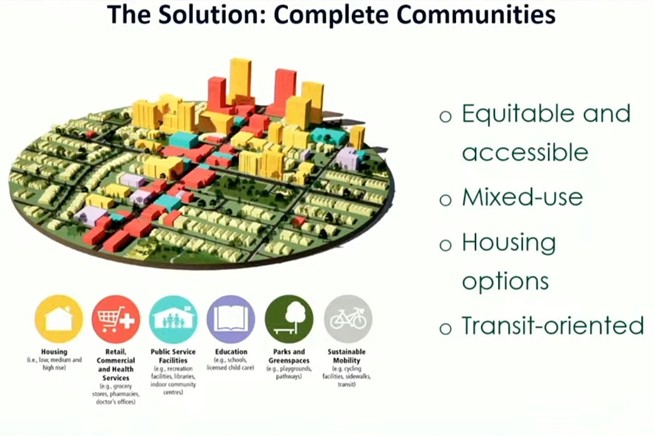
After that, Sydney Griffiths from the Ecology Action Centre presented her research about complete communities and Halifax’s inability to do sustainable development. Griffiths told the committee the issue with Halifax’s sustainability is sprawl. This is a lesson the city has been learning on and off for the past 20 years or so (2003, 2013, 2023) but absolutely refuses to take meaningful, decisive action on. This is why Griffiths was able to point to it as an issue this week, 20 years after it was first identified to the city of Halifax as an issue that needed to be urgently dealt with.
Griffiths said that the city should change its development fee structure. Right now the city charges fees based on units, so it’s cheaper for developers to build developments with fewer units. This is a policy that is working to exacerbate both the housing crisis and the climate crisis, as sprawled-out communities are low-density, polluting communities. Griffiths also suggested that the city zone land in accordance with existing transit plans—meaning the city should take page 50 of its Integrated Mobility Plan and zone for density around that.
If the IMP were a better planning document, the same could be done for bike infrastructure, but currently, the city’s bike plan for the HRM outside of the centre plan is mostly vibes.
The IMP is also similarly lacking an overarching plan for creating pedestrian zones, or pedestrian areas where we want complete communities, like Cole Harbour Road between Caldwell and Forrest Hills. This suggestion of Griffiths’ would require the city to produce good strategic transportation planning documents, which, based on transportation outcomes, the city has yet to do in the seven years since passing the IMP.
And finally she suggested the city should have pre-approved missing-middle in-fill housing designs that could be built as of right, anywhere in the city. This is something the city of Kelowna, British Columbia piloted, and it was recently adopted by the BC provincial government as a province-wide policy after Kelowna’s success with the program.

Councillors had questions for Griffiths. Lisa Blackburn wanted to know about the 15-minute-city conspiracy theory and where it came from (for those interested, CBC has a good explainer on the subject).
In her presentation Griffiths mentioned that the silent majority is being overruled by a vocal minority, and Trish Purdy wanted examples. Griffiths, using a personal example, told the committee that she was a student living downtown who didn’t have a car, couldn’t afford to buy a car and didn’t want to buy one. She would benefit from things like bike lanes, which would enable her to move around quickly, but the people who come to speak at meetings are often those who advocate for things that don’t help her, or would actively hinder her ability to live in the city.
For example, earlier this year Halifax businesses successfully lobbied city councillors to prevent raising parking fees in the HRM. They were successful in doing so, even though their main justification for the request was a survey among affected business owners who believed that this would affect their business, but didn’t have any facts to support this opinion. Because the evidence suggests that removing parking is better for business. This is likely why one of the main proponents of keeping free weekend parking, Steve-O-Reno’s cafe, converts their storefront parking spaces into patio space. This is better for both the business and the city, as the city will make more from Steve-O’s tax bill than they would on the parking fees in front of the cafe. And more patio space to hang out means living in Halifax for people like Griffiths is an overall better experience.
Councillor Cuttell commented that it’s funny that they had to get this presentation, because the idea of complete communities is not actually a new concept. In fact, it could be argued that before the invention of the automobile we only ever lived in complete communities. That, in turn, would mean the invention of the automobile is a cancer on society that now requires us to re-learn and re-invent the way humanity has always lived, save for the outlier of the past 70 or so years.
The rural recreation strategy was also deferred to get more input from stakeholders. If you think you should be a stakeholder (i.e. you are a rural recreation participant) you should reach out to the city.


